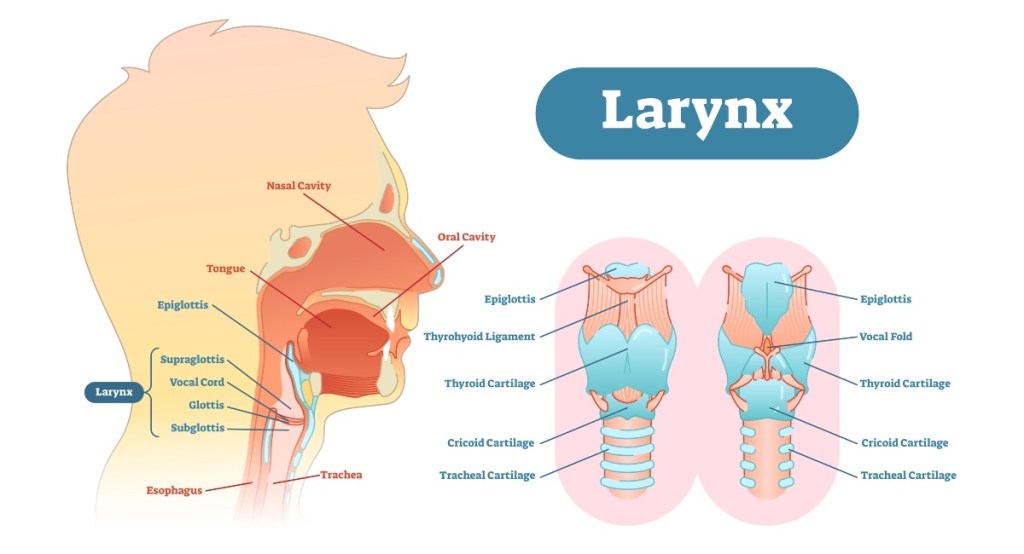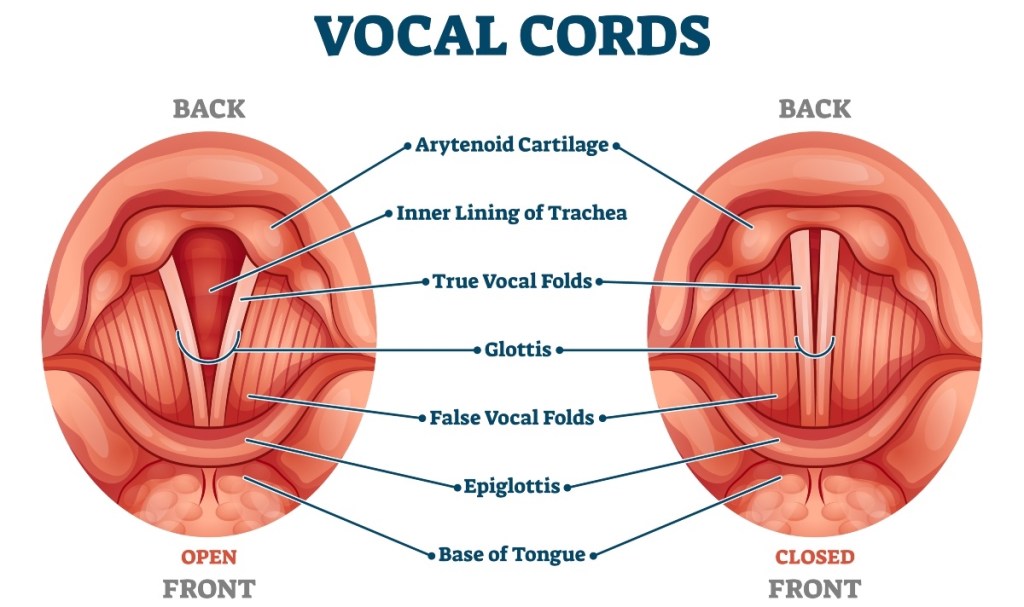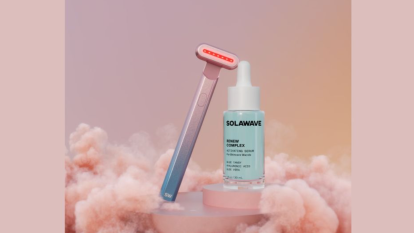MD: Why Your Voice Changes As You Get Older + How to Sound As Young As You Feel
A wavering voice can be both uncomfortable and embarrassing — but you don't need to settle for one!

It’s no surprise that our bodies change as we get older. Everything from the thickness of our hair down to the strength of our toes shifts and changes with each passing year. These changes aren’t confined to our outsides, either. Every system in our bodies undergoes a similar transformation. And that includes an aging female voice. Here, discover why the strength and tenor of the female voice changes with age, when it’s cause for concern and the simple strategies that can help slow the progression of an aging female voice.
Why your voice changes with age
Vocal changes are one of the most under-reported signs of aging, yet up to 47% of people will notice their voices transform over the years, according to research from the University of Utah. “There are physiologic changes that occur with aging that affect all three of the vocal subsystems,” explains Lesley Childs, MD, an Associate Professor of Laryngology, Neurolaryngology, and Professional Voice at UT Southwestern. These three systems include the larynx, or voice box, the vocal folds, also known as the vocal cords, and air pressure system, or the breathing mechanism.
“The most obvious change is in the vocal cords themselves, specifically the composition and organization of the vocal cord tissues,” says Dr. Childs, the Medical Director of the Clinical Center for Voice Care at UT Southwestern Medical Center. “Female vocal folds typically become thicker over time, whereas male vocal cords typically become thinner.”
Just as stiffening hips mean you can’t bend over as easily, these vocal cord transformations cause changes in the sounds they are able to produce. Vocal cords generate sound when the air from your lungs causes them to vibrate against each other, similar to a wind chime. When thinner cords vibrate against each other, they produce a different sound than thicker ones would. “Additional changes in our breath support and overall tissue elasticity also impact both voice quality and vocal control over time,” Dr. Childs adds.

The aging female voice gets deeper over time
When vocal changes first start to occur can vary widely, with some people beginning to notice variations in their 50s and others maintaining their youthful tenor into their 80s. In women, voices typically sound deeper with age. That’s often thanks to the thickening of their vocal cords, which produces a lower pitch. “Females who sing, especially, may notice that their pitch range shifts to a lower register over time,” adds Dr. Childs, herself an accomplished professional singer.
The aging male voice gets higher-pitched
In men the reverse usually happens. “The change in male voices is typically more pronounced and obvious, as male voices typically sound weaker and higher pitched over time,” says Dr. Childs. “Many times men in their 60s or 70s will complain that their voice no longer sounds as ‘authoritative’ as it once did.” Other common signs of an aging voice include loss of ability to project, reduced voice volume or endurance, a weak or breathy voice and voice tremors or shaky sounds.
How to make your voice sound younger
“In general, improved ‘vocal hygiene’ efforts play an important role,” in keeping your voice young, says Dr. Childs. “This includes adequate hydration, reduced dietary acid intake and reduced chronic throat clearing strategies.”
Drink more H2O
Drinking enough water throughout the day keeps your larynx and vocal cords lubricated, allowing them their full range of vibration. It also maintains moisture in your mouth and throat to eliminate scratchiness or raspiness. Aim for the standard eight glasses of water per day. (Need help hitting that goal? Click through to our sister publication to see how a motivational water bottle can help.)

Stop heartburn before it starts
A diet that’s rich in acidic foods such as tomato-based sauces, citrus fruits, fried food and processed snacks, can trigger acid reflux. This occurs when irritating stomach acid inches its way up into your esophagus or throat, which can cause vocal fatigue and changes in voice quality. Important to note: It’s the acid reflux that can contribute to aging voice, not the foods themselves. So if these foods don’t give you reflux, there’s no need to cut back on them.
But if you do experience acid reflux and don’t want to give up your favorite fare to safeguard your voice, there are natural reflux prevention strategy can help. One we like: Taking a “breath break”. Mayo Clinic research suggests breathing slowly and deeply for 15 to 30 minutes after eating. This simple diaphragmatic breathing trick cuts your risk of experiencing acid reflux by 88%. It works by strengthening the lower esophageal sphincter, the muscular valve at the base of the esophagus that keeps acid from reaching the “burn zone”. (If acid reflux is disrupting your sleep, click through to learn how to get rid of heartburn fast at night.)
Spritz your sinuses with a capsaicin spray
Many of us cough to clear our throats without even realizing it. But trying to banish hoarseness by coughing is likely making things worse. Chronic throat clearing can be a sign of an underlying voice issue such as vocal cord lesions (benign growths on the vocal cords) or chronic postnasal drip (the constant drip of mucus down the back of the throat). While most of the symptoms of aging voice are related to changes in the muscles surrounding your voice box and vocal cords, postnasal drip can contribute to hoarseness or raspiness as well. And considering that the condition increases with age, it’s not unlikely it’s playing a role.
While vocal lesions need to be treated by your doctor, you can easily thwart voice-sapping postnasal drip at home. One of the best ways to do so is by misting your sinuses with a capsaicin nasal spray up to three times daily. This helps thwart excess mucus production and heal the inflammation around irritated vocal cords. And research in The Journal of Allergy and Clinical Immunology found capsaicin nasal spray can begin to provide relief in as little as two minutes for 74% of people. One to try: Xlear MAX Sinus Spray (Buy from Amazon.com, $11.99).

Sound off like a siren
To counteract a voice that wavers more with age, do a simple “hum and glide” vocal exercise. A study in the Journal of the Korean Society of Laryngology, Phoniatrics and Logopedics suggests gliding and humming stretches and strengthens the vocal cords. This retrains them to let you speak smoothly, whether you’re chatting with a cashier in the supermarket or catching up with an old friend over coffee.
To do: Take a deep breath and begin a gentle hum at a low pitch, feeling the sound resonating in your nose and face. Then smoothly “glide” to a high pitch, then back down to a low pitch and up again like a weather warning siren. Concentrate on the control of your voice throughout the slow glide as you repeat for 5 minutes daily, taking breaths whenever your lungs naturally empty.
Give your lungs a workout to improve an aging voice
Lung function weakens up to 2% per year after age 25, which can impact your ability to project your voice in a noisy room or call your grandkids in for lunch after playing outside. The good news: Just as you can use strength and resistance training for your arm and leg muscles, a technique called inspiratory muscle strength training (IMST) can do the same for your lungs.
How it works: You use a small, low-tech device such as the Sonmol Breathing Exercise Device (Buy from Amazon.com, $19.99) for about 5 to 10 minutes a few times a day. The device offers resistance — just like a resistance band would — to help improve lung function. And according to a University of Delaware study in the Journal of Voice, practicing this exercise daily can improve vocal function in as little as four weeks.
When to see a doctor about your aging voice
Age-related vocal changes are normal and common, but there are some symptoms that warrant a trip to a specialist. “Changes in speech, articulation and/or swallow function that accompany changes in the [sound of the] voice should prompt an evaluation with a specialist such as a laryngologist,” Dr. Childs says. These could be signs of a neurological disorder such as multiple sclerosis or Parkinson’s disease, hearing loss, dental issues, stroke, migraines, or another underlying issue. A laryngologist, or a doctor who specializes in the larynx, can examine your vocal systems to determine if the changes are originating there or if there may be something else at play.
For an aging voice that needs extra help
If at-home strategies aren’t doing the trick, a laryngologist can help. “There are treatment options for aging vocal folds as well as for tremor of the voice box,” says Dr. Childs. “So even the ‘normal’ changes that occur over time can be addressed and treated by a laryngologist.” If your voice is important in your professional life, or you simply want to sound more youthful in your day to day, there are more strategies that can help.
“For thinning vocal cords, we will often inject a filler substance or place implants in the vocal cords in order to ‘bulk them up’,” Dr. Childs says. “Some of these augmentation procedures can be performed as simple office procedures.” Specialists also use Botox injections for voice tremors. “These injections are performed in the office to reduce the motion of the vocal cord muscles and improve control of the sound quality,” Dr. Childs explains.

One study from Vanderbilt University Medical Center found that Botox injections improved voice quality in over 500 patients with neurologic conditions that affect the larynx. (Botox can do more than smooth wrinkles and restore your voice. Click through to our sister publication to see how masseter botox can tamp down jaw pain and headaches, too.)
Note: These conditions are not on the list of official FDA-approved uses of Botox injections. So while doctors have used them with success and studies have showed positive results, they may not be covered by health insurance.
Read on for more ways to outsmart aging so you look and feel years younger:
Why You Should Be Slugging — The Viral Skincare Hack to Save Aging Skin
Turn Back the Clock by Enjoying These 6 Delicious Anti-aging Superfoods
What Is ‘Inflammaging’ — And How Can You Manage It? Try These 4 Science-Backed Tips













